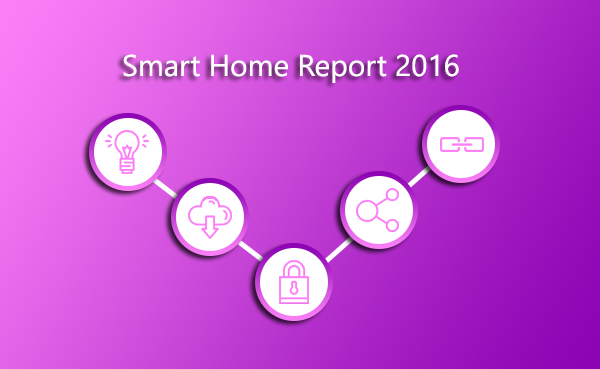As 2016 draws to a close, we share our thoughts on the smart home industry and what we’d like to see happen in 2017.
We are very passionate about creating a smarter home, driven by our interest in technology. Many people seem to like the idea, however the cost seems to be stumbling point which is halting uptake. The feedback in general is “why would I spend all that money to turn my lights on via my phone, when I can walk over and use a switch”. Obviously there is a lot more to it than that (cue my usual passionate defence).
Whilst many are uneducated about the possible benefits, I understand the current consensus. At the moment in time I see it having great benefits for disabled people, who are not very mobile or have poor vision.
Like it or not manufacturers of technology are designing products with smart home capabilities in mind.
Breaking down the into areas of smart tech here are our key focus points:
Product Affordability
For a greater uptake in the smart home industry we need to see increased competition which will lead to driving down prices.
Although a smart home has many advantages, the costs to spread tech throughout your house is expensive. Starter sets are usually a good place to start, however adding multiple sensors to different rooms can be costly. If you have a big house with multiple doors for example, you might want a host of door sensors. At around £30 each, these sensors can soon add up. Without them your home is restricted and less secure.
Light bulbs are also another costly addition to a smart home, there are many dotted around are homes. However changing them at £30-£40 a bulb makes upgrading rooms another costly exercise. Once you start upgrading the one room, you’ll want to get them all done. However with plenty of other living costs, these maybe considered a luxury.
Product Compatibility
One industry standard to rule them all! We’d love every product to work with each other within the smart home industry. However not everything does, and without the time and effort of research, consumers can be left confused.
Online software such as IFTTT and Stringify can help combine products. However if you have a home automation hub, you’ll more than likely want things in one place. There is nothing more frustrating than having an app for this and an app for that. Likewise having multiple hubs for different products consumes space and clutters your home.
One of the reasons we opted for Samsung SmartThings is that it was quite open and already worked with many different brands. However there is still a long way to go and with other companies entering the market such as Apple, it is likely to be competitive. These brands can have an major impact on smart home products as they may look to gain exclusive rights to particular products.
Product Reliability
One of the main issues with smart home products is reliability, during early days there were many issues. However in recent times, reliability is improving. My home automation set up still has one or two issues with triggering events on certain occasions. Also my partners phone (an old iphone 4) has issues as a presence sensor and sometimes registers her at home when within a large distance. This is quite off putting for the uptake of smart locks, as my home could be open for large periods of time.
A lot has also been said about the security issues of such smart home products and their access from hackers. Now this might not be applicable to all smart home products, but if you use them for home monitoring, this could well be an issue. Although my knowledge of this area isn’t great, I still want to think that tech companies are thinking about making products more secure.
Voice Products
We have been using Amazon Echo combined with Amazon Music for the last few months and we are impressed. We predict a big year in the voice market and this could be a game changer for smart homes. Our Echo is positioned in the Kitchen and when your hands are full, it’s great to be able to request information. It will only get better as time goes on, there are plenty of development opportunities available.
What we’re missing
There are some great opportunities for manufacturers to still join the smart home market.
Affordable motorised blinds would be a great addition, saving you time opening the curtains in the morning or evening. It would also give you peace of mind when on holiday deterring burglars by showcasing activity.
Affordable and compatible Smart plug sockets with USB sockets. Smart home plug adaptors are usually bulky and heavy. They look large and bulky and if you have issues with space they can be ineffective. Although there are smart plug sockets available, they seem to be on a closed network requiring yet another hub. A more affordable and compatible solution is required. Not forgetting to add USB sockets for phone charging capabilities.
Thanks for reading our blog, we hope to bring you more news and reviews in 2017. Have a great Christmas and all the best for the year ahead.

